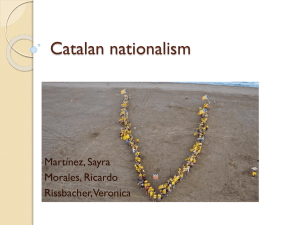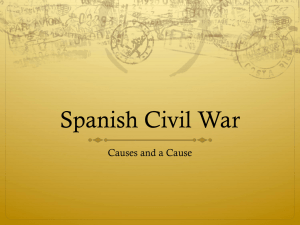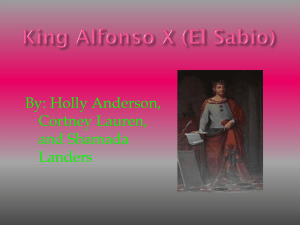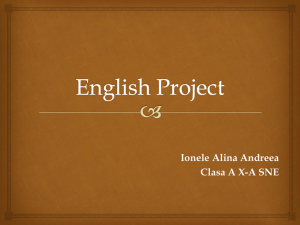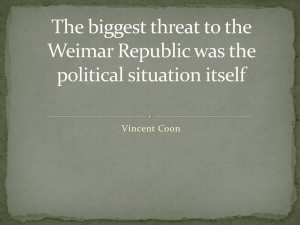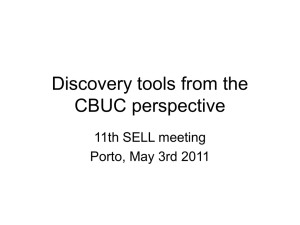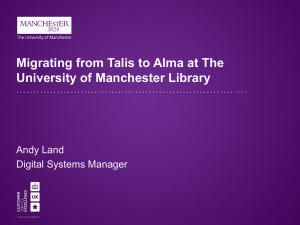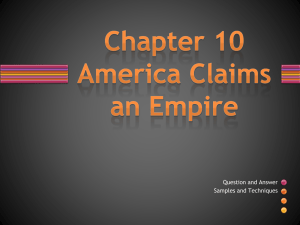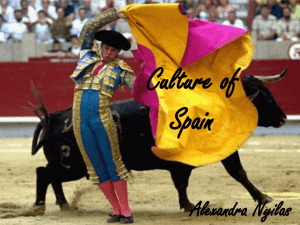spanish civil war causes
advertisement
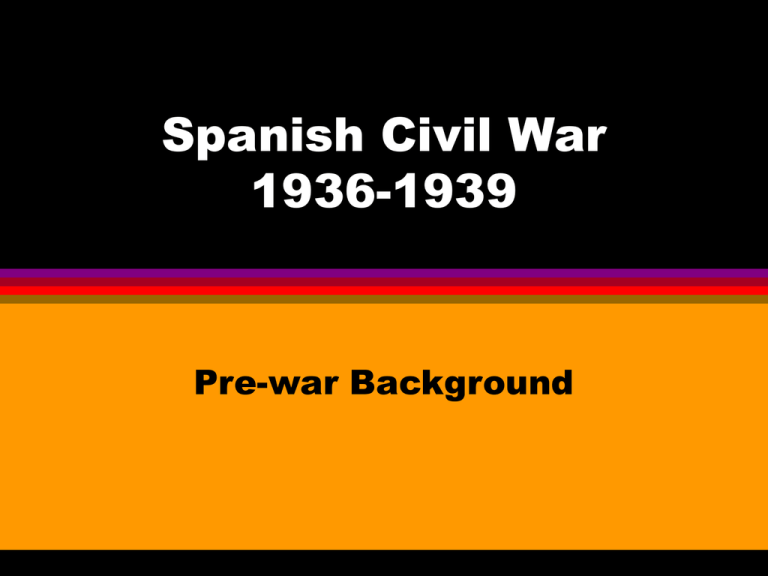
Spanish Civil War 1936-1939 Pre-war Background Spain July 1936 Rule of Primo de Rivera Sept. 1923 After years of chaos, Democracy overthrown by Miguel Primo de Rivera. Suspended Constitution, powers of Cortes curtailed, strict censorship Directorate of Army & Navy Officers would control Spanish political life. Alfonso XIII remained on throne but no power Rule of Primo de Rivera Sept. 1923 Political opponents banished (Don Miguel de Unanumo) Provinces: Military regimes with commission of 3 generals per region replaced civil governorships Catalonia: Primo de Rivera crushed separatist movement (Catalan extremist activities grew) Situation in Morocco Uprising of several tribes in the Rif with more than 4,000 Spanish soldiers dead 1924: Primo de Rivera decides that protectorate should be abandoned Head of Spanish Garrison (Colonel Franco) felt Spain should stay Policy of withdrawal encouraged Moroccan rebel leader to do more damage to Spanish garrisons Situation in Morocco 1925: Moroccan rebel leader began offensive against French presence France opted to crush rebellion and both countries enter into joint military offensive 1926: France & Spain agree to delineate Moroccan frontier 33 yr. old Franco promoted to General (said to be youngest in Europe) Primo’s Rule Ends Could never seriously tackle the agrarian reform needed Brought in Francisco Largo Caballero, head of Socialist Trade Union to set up industrial trade boards Caballero got heat from CNT (Anarchist syndicalist trade union) when he banned their publications Primo’s Rule Ends Modernization of Spain was wasteful due to ambiguous engineering projects and bad planning. Primo de Rivera tried to enforce his will more and more until he offered to resign if not given a vote of confidence. Resigned Jan. 1930 Miguel Primo de Rivera King Alfonso’s Departure Alfonso placed another general as head of government, (Berenguer) Realized Constitution must be restored Berenguer resigned and four days later, Admiral Aznar formed a gov't to organize municipal elections King Alfonso’s Departure Monarchists hold countryside (due to conservative smallholders in Northern Belt and electoral intimidation by caciques) Every large town but Cadiz, antimonarchical candidates Army said no to Alfonso support, General Sanjurjo (Commander of Civil Guard said no) Alfonso abdicates (British disappointed; to them Alfonso was like them "more articulate", Churchill) Proclamation of 2nd Republic (Republic of the Left) 1931: Middle class government stepped in to replace the king's men (but radical!!!) Lerroux- former radical demagogue (corrupt) Indalecio Prieto- R wing leader of the PSOE (Spanish Soc. Worker's Party) who had middle class and intellectuals’ backing Proclamation of 2nd Republic (Republic of the Left) Francisco Largo Caballero-L wing leader of the PSOE who had union member backing Fernando de los Rios- moderate socialist professor Cásares Quiroga-liberal Galician lawyer Manuel Azaña- who would be in charge of government Republic of the Left Wanted to address problems plaguing Spain • • • • Social problems Regional problems Army Agrarian Social Question Changing attitudes of Catholic, socialists and anarchist unions Urban workers: (Barcelona) syndicalism; CNT Rural: (Andalucía) anarchy; idealization of their own towns as self-sufficient communities, CNT Regional Problems Catalonia (granted its autonomy in 1932) under the Republic of the Left Many in Cortes argued for a unified national state Basques: moving toward same; characteristics: religious, political isolation and agricultural selfsufficiency (In 1931, appeared more to the right than most groups) During the war their autonomy was promulgated (1936) Galicia? Valencia? Army Problem Most of the army was offended by Catalan autonomy Manuel Azaña (Azaña Law) made officers swear fidelity to the new republic or retire with full pay Many "Africanists" thought the Republic represented the same problem as Morocco, infestation needed to be rooted out. Agrarian Problem Excessive division of land leading to small plots not providing owners with return sufficient to live on Great quantities of large estates in hands of absentee landlords Different classes of leases leading to confusion and discontent Anarchism Founder, Mikhail Bakunin, Russian:lived at same time as Marx Russian Prince who devoted himself to overthrowing autocracies He and Marx would struggle for control of the International (1868-1872) Anarchism All exercise of authority perverts and all submission to authority humiliates The worst kind of authority is the STATE which is the most flagrant, most cynical and most complete denial of humanity because every state like every theology, assumes men to be fundamentally bad and wicked. Anarchism Therefore, state must be done away with State to be replaced with a free federal regime in which autonomous bodies (societies, groups or municipalities) contract voluntary pacts with one another Envisioned, cooperative communities, associating freely Anarchism Bakunin wished to destroy God also God is creation of men’s slavish instincts and man will never be free until he has ceased to believe in him Theology also assumes that men are bad and wicked Bakunin believed men to be good enough to live in a free society, which would have its own ways of exercising pressure upon them Anarchism In the new world, public opinion would be strong enough to deal with all infractions of its code without recourse to any central authority Uprising necessary to open people's eyes and unfetter the vast potential of goodwill and set off the spontaneous creativity of the masses Frustration of not being able to unlock this mechanism of history: led to individual acts of political violence. Anarchist Socialism in Spain One of Bakunin’s emissaries, Giuseppi Fanelli went to Spain Took root among millions of industrial workers and millions of landless peasants Bakunists were strongest in Andalucia (south) Anarchism appealed to anti-centralist feelings offering moral alternative to political corruption and hypocrisy of church Syndicalism Revolutionary doctrine by which workers seize control of the economy and the government by direct means (general strike) establishing an economic organization by where industries are owned and managed by the workers Civil Guards (Guardia Civil) Special units of paramilitary police force (rural) eventually sprouted in cities originated in mid 19th century (similar to Mexican “federales”) dedicated to maintaining law and order in the country created in response to banditry, then popular agrarian uprisings, then radicalized labor unions New Constitution 1931 Article 26 separated church and state Constitution included many other anticlerical clauses Education to be inspired by "ideals of solidarity" (in other words, education under Catholic control was to be suppressed) Azaña publicly said that Spain had ceased to be Catholic only meaning that Spain had ceased to be clerical. Dissolution of certain religious orders (the Jesuits) New Constitution 1931 Women were granted suffrage, crime of adultery abolished New Statute for Autonomy for Catalonia drawn up New Institute of Agrarian Reform: new measures exceedingly complicated and met with much opposition from expropriated landholders Excessive bureaucracy in procedures to redistribute land Lack of date and advanced studies on quality and fertility of land Which land belonged to same owner? End Result: Land reform slow in coming making discontents angry and anxious resulting in Agrarian Violence Jan 1932: Castilblanco at Badajoz (general strike by the UGT, the socialist trade union) Four civil guards hacked to pieces by workers; Women of village danced around their mutilated bodies Few days later there was a court of inquiry; no one talked; it had been a collective deed Similar to Lope de Vega story of Fuenteovejuña Agrarian Violence Arnedo in Rioja: (shortly after Castilblanco) 7 workers died and 30 wounded by Civil Guards breaking up demonstration in front of city hall. Jan. 1933: Casas Viejas in Cadiz; workers declared libertarian communism attacking headquarters of Civil Guards killing several. Reinforcements made them retreat and 5 men, 2 women and child took refuge in shack. Civil Guards set it on fire. 14 other prisoners were put to death without trial. Fall of the Republic of the Left Right believed the reforms were too radical and rapid Left believed they were too moderate and slow Liberals turned against Azaña and Opposition was vociferous in their attacks Liberals turned out to be incapable of creating democratic habits & customs sufficiently strong to satisfy the aspirations of both working and governing classes. Azaña government called for elections for Nov. 1933 National Elections 1933 Election was essentially a referendum on legislation passed in last two years. Marked the official reentry into politics of the antidemocratic Right Conservatives gave most of their support to CEDA (Confederación Española de Derechos Autónomos) who won most of seats in Cortes. The CEDA in power 1933-1936 Once in power they: • suspended the statute of autonomy for Catalonia • instituted press censorship • increased the size of the Guardia Civil (natural predator of the working class) • unpicked the republican and socialist legislation of the former administration • proceeded to repeal or suspend legislation dealing with religion Revolt against the Right Militant labor unions organized nationwide protest campaign Oct. 1934 uprising occurred in Madrid, Catalonia, Basque provinces and Asturias In conjunction with uprisings Asturian revolutionary committees called for general strike 200 miners took control of the town of Mieres and soon spreading out through entire province 30,000 armed workers outnumbering government forces by 10 to 1 occupied every important city including capital of Oviedo and demanded autonomous republic Revolt in Asturias put down Elite unit of Foreign Legions and regiments of North African Moors flown in and counterattacked during a week & ½ of bloody fighting and suppression. Final act of desperation: workers destroyed symbols of establishment; churches, barracks, government buildings Victors treated the Asturians as conquered nation instituting systematic reign of terror 1,335 dead and 3,000 wounded (modest ministry figures) September 1935: financial scandal forced the dissolution of government and the calling for new elections Elections of 1936 After 5 years of social and political instability, two coalitions that had by then formed forced their disputes to a new vote Long established holders of economic power, led by Army and supported by church, (incarnation of past Spanish glories) believed they were at the point of being overwhelmed by the left: formed coalition constituting National Front End of 1935: grand coalition of parties of the left began to merge in preparation for the elections of 1936 calling themselves the Popular Front. The Two Factions Pre-War Right CEDA (political alliance of the right wing Catholic parties, brought under by Gil Robles) JAP: Juventud Acción Popular (CEDA’s youth movement Radical Party: lead by Alejandro Lerroux Lliga Catalana: part of the grande bourgeoisie Popular Front Parties Union Republicana (R wing of popular front) Izquierda Republicana: Azañas republican left party Esquerra Republicana de Catalunya: Republican L party of Catalonia (counterpart to Azaña’s party PSOE: Spanish Worker’s Soc. Party UGT: trade union of socialists PCE: Spanish Communist Party JSU: United Socialist Youth PSUC: United Soc. Party of Catalonia POUM: Worker’s Party of Marxist Unification (led by Andres Nin, Trotsky’s former secretary Popular Front Victory Popular Front won a narrow victory Azaña again became the head of the government and pardoned all those arrested in the October Rebellion Azaña lifted the suspension of Catalan autonomy and once again pushed for agrarian reform The victory of the Popular Front and the acts of violence that followed, prompted generals to discuss dates for a pronunciamento. Two Spains set out to settle their differences on the field of battle
